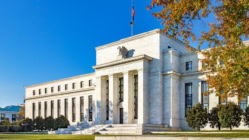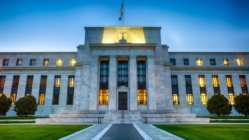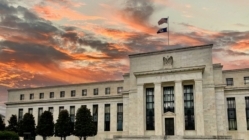Today’s Consumer Price Index (CPI) inflation report came in hotter than expected, and the markets went into panic mode.
Rates shot way up, as rate cuts by the Fed seem less and less likely. (Rates are 3/8% higher than where they were a few weeks ago, but still over 1/2% LOWER than where they were in October).
X is full of comments about how we’re again facing 1970s stagflation (recessions coupled with high inflation) – but are we?
Nobody Really Understands What Caused 1970s Inflation
There are several reasons prices increased including: (1) supply shocks or limits; (2) demand surges; and (3) increases in the money supply.
In the 1970s, we saw all three: (1) the OPEC oil embargo pushed oil prices way higher – which pushed other prices up; (2) baby boomers hit peak consumption age – which pulled prices way higher; and (3) we saw a massive increase in our money supply, resulting from increased bank lending (where most “new money” comes from) and going off of the gold standard.
The velocity of money (or how fast it turns over in the economy) was also a factor, as velocity was high in the 1970s.
What’s Causing Today’s Inflation?
The political right loves to blame Joe Biden, and the spending he and Congress fostered after COVID no doubt played a role (as did Mr. Trump’s spending – as people are still spending “stimulus”).
1. Supply Shocks – Yep!
Per analysts like Jeff Snider, the causes of today’s inflation are as much supply-shock-driven as spending-driven.
Here are a few of the supply shocks we’re experiencing:
-
- COVID SHUTDOWNS: A huge cause of today’s inflation was the COVID shutdowns that cut off supply chains – and the impact is still with us;
- OIL IMPORTS/SUEZ CANAL: Another huge cause of inflation is the limitation of the Suez Canal (fostered by wars in the Middle East), which is pushing oil and many consumer goods prices much higher.
2. Demand Surges? (Not Today)
But, we’re not seeing the same type of demand-pull inflation we saw in the 1970s, as many economies across the world are struggling and consumers and many aspects of the U.S. economy are struggling as well.
3. Money Supply’s Decreasing
And, as famed economist, Steve Hanke, reminds us over and over, the M2 money supply (checking, savings, money market) has been DECREASING ever since COVID ended at a rate we have not seen since the 1930s.
The velocity of money is also much lower compared to the 1970s.
Today’s CPI report was pushed higher by several items including insurance costs, energy costs, and shelter costs.
Insurance costs will likely level out as the industry adjusts to new regulatory and cost structures.
Energy costs will fall if we go into a recession and demand falls further, if the supply bottlenecks are eliminated or circumvented, and/or if production in areas that are not prone to distribution issues increases (like in the U.S.). In addition, analysts like Jeff Snider and George Gammon both remind us that higher oil prices can be deflationary – if demand for other goods and services wanes in response to the higher oil prices. Here is a video where Snider explains how high oil prices lead to “disinflation.”
And the shelter component is utter nonsense, per economist Lacy Hunt – who explains that it is nothing more than a rough estimate based on faulty survey data that is meaningless.
China, Japan and Other Countries Could Export Deflation
China and Japan are facing currency devaluations and deflationary pressures – which, if exported to the U.S., will bring inflation down like what we saw happen for much of the last several decades.
CONCLUSION: While we could be entering into a 1970s-style “stagflation period,” it is also possible that today’s inflation will not last – particularly if we slide into a recession. This is because we do not have the demand, velocity and money supply components we had in the 1970s.
























